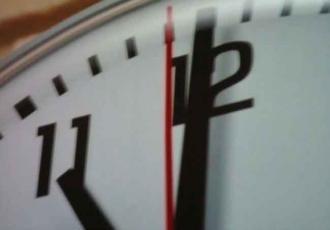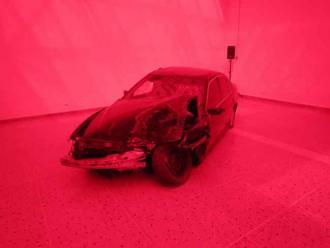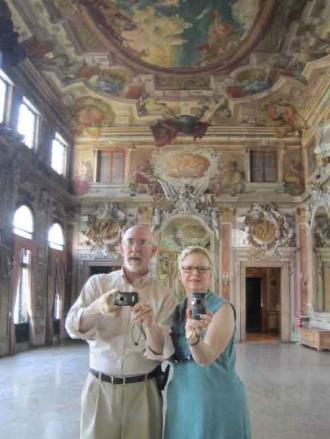Bice Curiger's curated show spread over the former Italian Pavilion in the Giardini and extended through much of the Arsenale. As Curiger's theme/title ILLUMInations suggests, the aim is to shed light on the contemporary art scene. Surprisingly, the visitor is introduced to this with three paintings by the great 16th-century Venetian Jacopo Tintoretto, placed at the entrance to the central Pavilion. By foregrounding Tintoretto, a master Venetian painter working with light and color, Curiger set a standard against which her selections of contemporary art might be compared. What is one to see in this contemporary paragone? That Tintoretto cannot be superseded? That painting continues to dominate a hierarchy of media? That artists and viewers should never lose sight of history and context? A visitor might approach the curated sections of this Biennale with these thoughts.
Tintoretto may not be an arbitrary presence, but he is problematic. Apart from setting the stage with ideas of light and color, Tintoretto's work reminds viewers of the contested place of Venice in the history of art -- not at the center in the 16th century (unless one was a Venetian painter!), and in the 21st no longer the only biennial venue. The question becomes, Does the 54th Biennale di Venezia return Venice to centrality in the display of contemporary art? The argument in Tintoretto's time was one of colore versus disegno. Today it is art versus the market -- and the encroaching influence of such players as Francois Pinault and Victor Pinchuck, both of whom use the Biennale to show off their private collections, is not salutary.

Christian Marclay, The Clock (2010). Single-channel video
The Tintorettos at the beginning of ILLUMInations are echoed by Christian Marclay's The Clock at the end -- Curiger's curated show starts with the timeless and ends with a work that deals only with time. A 24-hour montage of film clips featuring watches and other timepieces, The Clock was the biggest draw, suggesting that a hunger for narrative still exists among the critics and journalists who cover contemporary art.

Libia Castro/Olafur Olafsson, Il Tuo Paese Non Esiste (2003-ongoing)
An interest in grand narrative was also in evidence in several of the national pavilions, where opera proved a useful structure for several artists:
Iceland's Libia Castro and Olafur Olafsson filmed an opera singer floating down the canals of Venice in a gondola, singing "Your Country Does Not Exist" to bemused Venetians and startled tourists.
The Netherlands structured its pavilion as an opera house, and many of the accompanying texts used opera to structure analysis of Dutch modernity.
Everyone from Calvin and Rembrandt to Lully and Mondrian are brought in to demonstrate the linkages between drama and money, creativity and consensus in Dutch arts.
The German pavilion reprised the installation of Christoph Schlingensief's 2008 Fluxus Oratorio, and presented documentation on the Opera Village in Burkino Faso that Schlingensief was working on at his death in 2010.

Hajnal Nemeth, Crash - Passive Interview (2010)
Hungary featured a mixed-media presentation that projected an opera based on automobile accidents (complete with wrecked BMW in the gallery, and a video libretto of opera singers belting out interviews with crash victims).

Hajnal Nemeth, Crash - Passive Interview (2010)
It sounds absurd at first, but most operas have pretty thin plots, and car accidents are more present to the lives of 21st-century audiences than ghosts and mistaken identities.

Och & Thayer at Palazzo Zenobio. Photo: Marjorie Och
Preston Thayer (New Mexico State University) and Marjorie Och (University of Mary Washington) reporting from the 54th Biennale di Venezia.